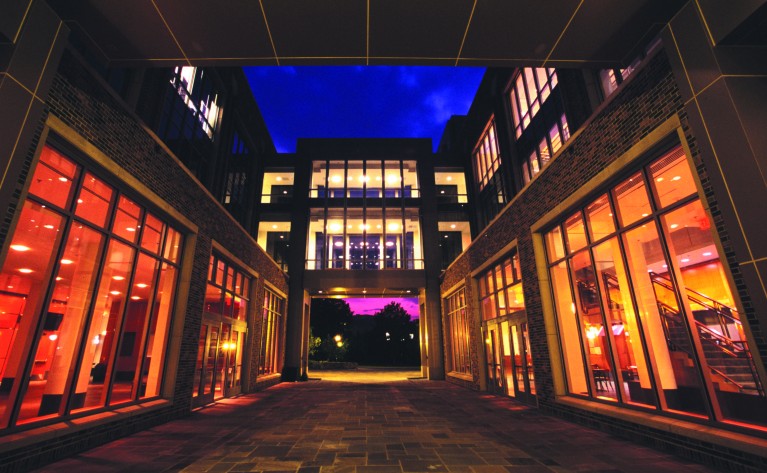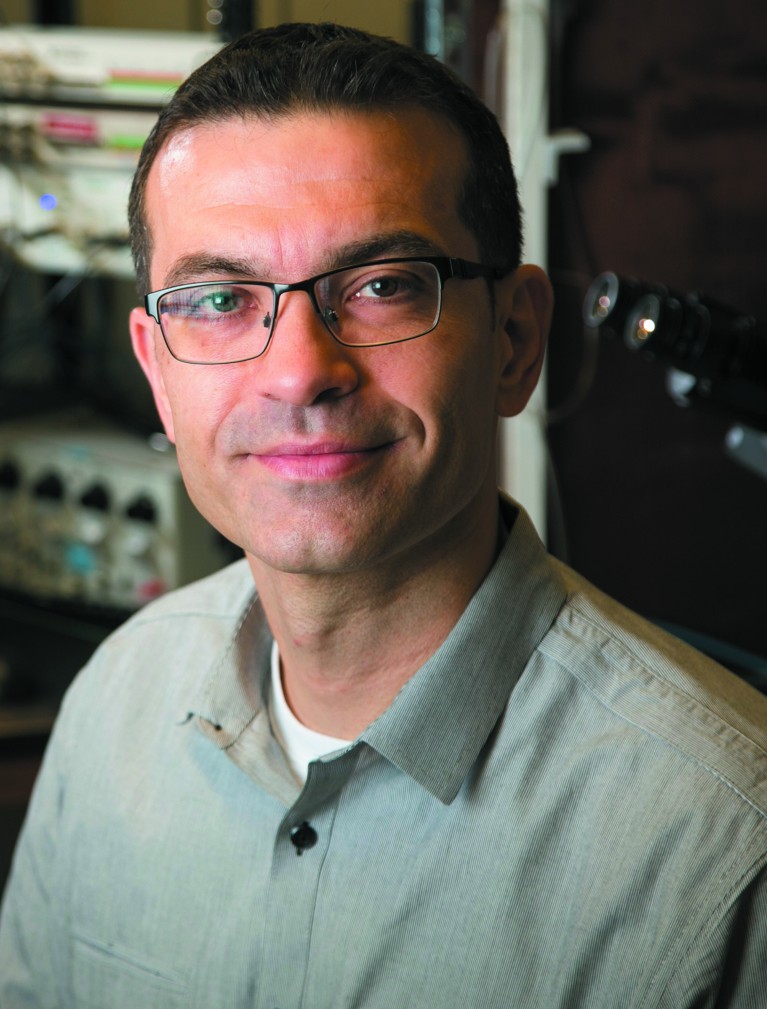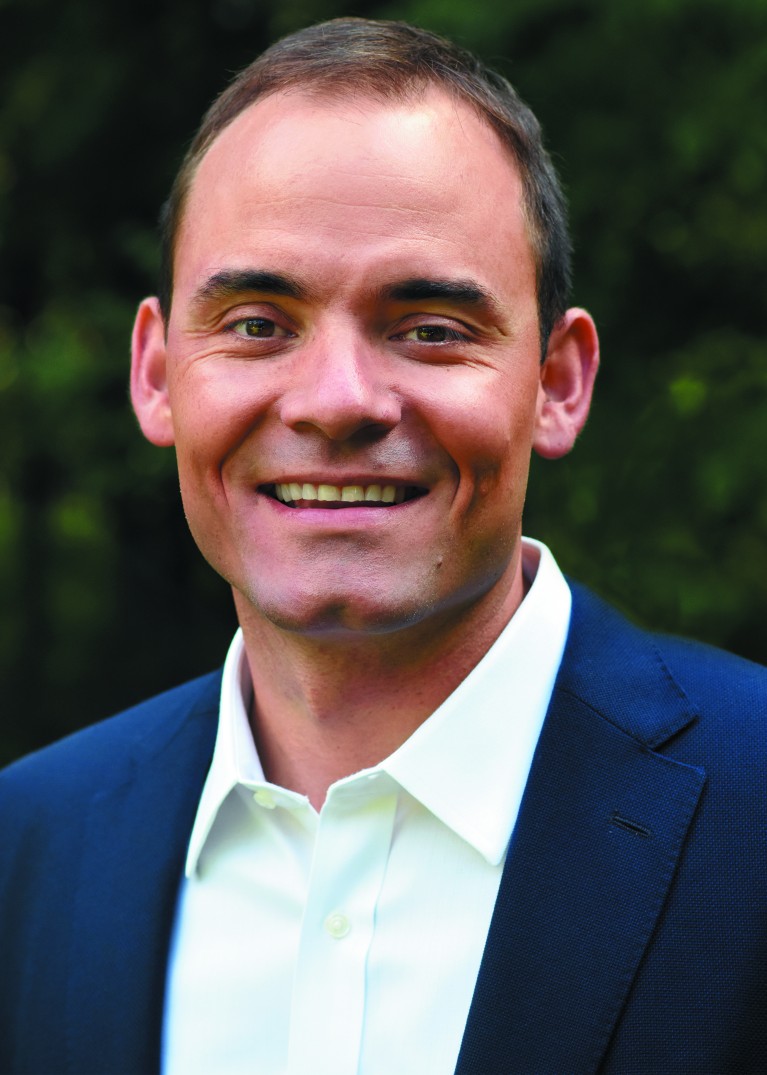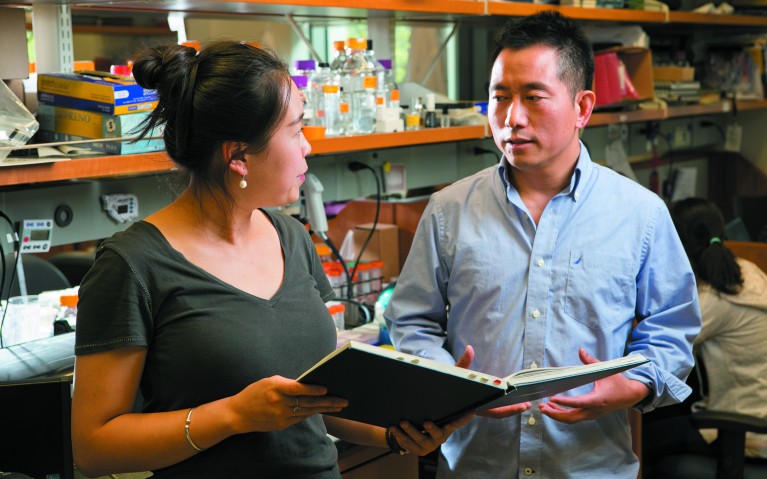
Led by department chair Ashutosh Chilkoti, Duke BME is home to more than 40 tenured and tenure-track faculty, with 21 American Institute for Medical and Biological Engineering Fellows, seven Biomedical Engineering Society fellows, five members of the National Academy of Inventors, four Society of Biomaterials Clemson Award winners, and two members of the National Academy of Engineering.
Pioneers of innovative research
Nenad Bursac is investigating pluripotent stem cell therapies for heart and muscle disease.
Among those leading Duke BME research into the future are the many faculty whose work is highlighted in this publication. Tissue engineer Nenad Bursac, for example, develops stem cell therapies to restore the function of damaged or diseased tissues and organs, specifically cardiac and skeletal muscles. Bursac recently published two papers in Nature Communications, in which his team used pluripotent stem cells to develop a fully functioning artificial human heart tissue patch large enough to cover damage from a human heart attack (p. 38) and functional human skeletal muscle tissue to be used in modelling of rare muscle diseases and drug testing (p. 16).
Charles Gersbach and his team develop new technologies to modify epigenome regulation, genome sequences and cellular gene networks in a precise and targeted way.
Lingchong You’s research encompasses computational systems biology, synthetic biology and mechanisms of information processing by gene networks. In a 2016 Nature Microbiology paper, You and team showed that antibiotics do not generally promote the rate at which gene transfer occurs between pairs of bacterial cells (p. 160). In Nature Biotechnology (p. 53), You demonstrated the assembly of pressure sensors using engineered bacteria capable of self-organized pattern formation. This work represents a new strategy to produce structured, functional materials using living cells.
Duke BME chair Ashutosh Chilkoti’s research in genetically encoded biomaterials has appeared in multiple publications in Nature Materials (pp. 191 and 296). Examples of innovative biomaterials to deliver small-molecule cancer drugs have appeared in Nature Materials (p. 309) and Nature Communications (p. 199). His most recent work, published in Nature Biomedical Engineering, showcases a novel injectable depot of a thermally responsive polypeptide fused to a peptide for treatment of type 2 diabetes (p. 82).
Moving discoveries from laboratory to clinic
Lingchong You’s work involves the design, modeling and construction of robust gene networks for applications in engineering and medicine.
Launched in 2005 by Duke University and the Wallace H. Coulter Foundation, the partnership facilitates the translation of biomedical research advances into tools and therapies for patients. In its first decade, the foundation awarded US$8 million to support 39 collaborative research projects between Duke BME faculty and Duke University Medical Center clinicians, yielding $489 million in follow-on funding and 13 licenses to industry.
Building upon the Coulter Partnership, Duke BME in 2017 launched BRiDGE – the Bioengineering Research initiative to Develop Global Entrepreneurs. BRiDGE expands the resources available to startup companies founded by Duke BME faculty, PhD students and alumni and helps to develop their entrepreneurial skills. It has rapidly grown to encompass a startup incubator, a summer internship programme for master’s and PhD students, and an entrepreneurial post-doctoral fellowship programme that gives Duke BME PhDs intellectual and financial freedom to explore translating their doctoral research into startups.
Duke BME’s ethos reflects the department’s aspiration to use biomedical engineering to serve society. Through its scholarly faculty, innovative research and entrepreneurial focus, the department seeks to improve the human condition through the advancement of healthcare. The papers in this collection are a snapshot of this aspiration.

